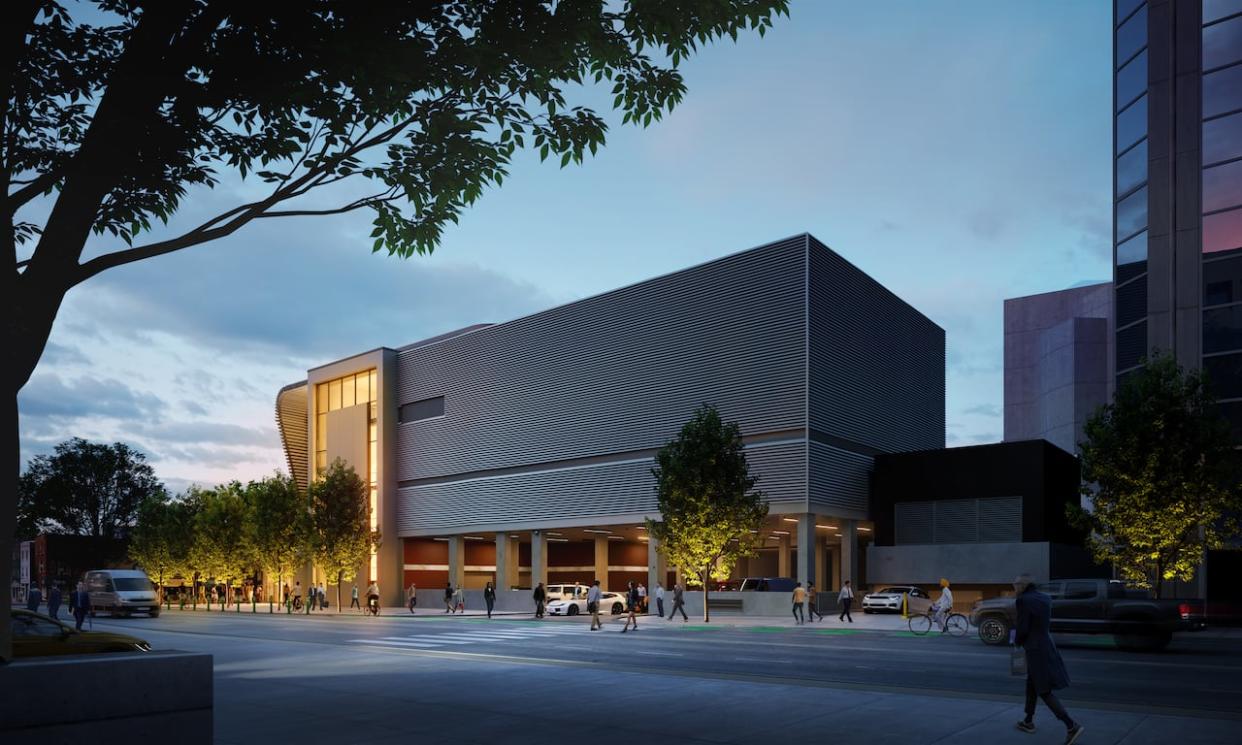Edmonton district energy system scaled back from original plans, but will still cost more

A central energy hub for downtown Edmonton will cost more and be scaled down from the original vision touted as a game changer in the city's energy efficiency goals.
The Downtown District Energy System is now estimated to cost 27 per cent more to build: $35.9 million up from the $28.2 million projected in February 2021, project managers told city council on Tuesday.
The project, under construction at 102A Avenue and 97th Street, was originally designed to generate heat and cool air from a natural gas plant.
It's been reduced to heat only, a change city and Epcor project managers came up with last June, and included in the update to city council this week.
The district energy building, based out of the Winspear Centre expansion, is almost complete. But more money is needed to finish the infrastructure to connect two nearby city-owned buildings, Century Place and Chancery Hall.
Christian Felske, the city's director of renewable energy systems, said inflationary pressure is a factor in the increased price tag, including higher costs for materials, construction and commodities.
"It was recommended in June 2022 that the project scope change from a combined heat and power system to a heating-only based system, utilizing boiler technology," Felske said in an email.
The $7.7-million increase is also attributed to more advanced design work that changed the project scope, Felske added.
"This increase would have been higher had the scope adjustment to heat-only not been made."
On Tuesday, in a 10-3 vote, city council agreed to increase the project's capital budget.
Coun. Andrew Knack, Karen Principe and Erin Rutherford voted against the hike.
Rutherford said the implications of future escalating operating costs, outlined in the report, are too much risk to the city's budgets and the taxpayer.
"I can't in good faith — knowing the current economic conditions we're in, knowing where else we want to push levers on climate action, see that kind of operating loss on a year-over-year basis ranging between $1.5 and $3 million — continue on this project," she said at the council meeting.
"I just, I can't support it."
The City of Edmonton owns the generation facility and Epcor is building and operating the infrastructure.
The district energy system, touted as a key factor in reducing the city's greenhouse gas emissions, aims to eventually connect dozens of downtown buildings to the central grid.
No longer 'leading edge'
Coun. Tim Cartmell agreed to the budget increase somewhat reluctantly.
The original concept included a co-generation component — later funnelling in some biogas and hydrogen to the natural gas plant.
"It's not the same leading-edge, energy-efficient thing that we were trying to get to," Cartmell said Wednesday. "It's essentially a giant boiler."
The city has invested more than $6 million already, with the Winspear now reliant on the facility for its heating.
"The problem is that we're kind of half there," Cartmell said.
"So do you stop and mothball, which would have implications? Or do you continue on?"
The city admits future expansion is required to generate the necessary revenues to pay for the capital costs. Cartmell said he's hoping the project can be viable.
The system is envisioned to eventually power up to 50 buildings, including hotels, offices, commercial and residential buildings.
The expansion includes the future Village at Ice District and Station Lands, representing more than 2.2 million square metres of floor area, as well as 103 megawatts of peak heating and 90 megawatts of peak cooling demand.
"Aggregating these buildings into a District Energy network translates to a significant reduction in installed equipment capacity compared to the individual building level," a city report on the project says.
Mayor Amarjeet Sohi also expressed reservations about the changes, but noted that administration is trying to get the private sector on board to make it more financially feasible.
Felske described the first phase of the project as creating a foundation of a system that "needs to grow to become financially, economically and environmentally fully sustainable.
"This growth is not expected overnight, and will take decades of investment and operational efficiencies," he said.
The first phase of the energy district system is now projected to start operating in 2025 — three years later than the original operating date of fall 2022.
The second phase consists of connecting city hall, the Stanley A. Milner Library and the Citadel Theatre between 2028 and 2030, the city report says.


